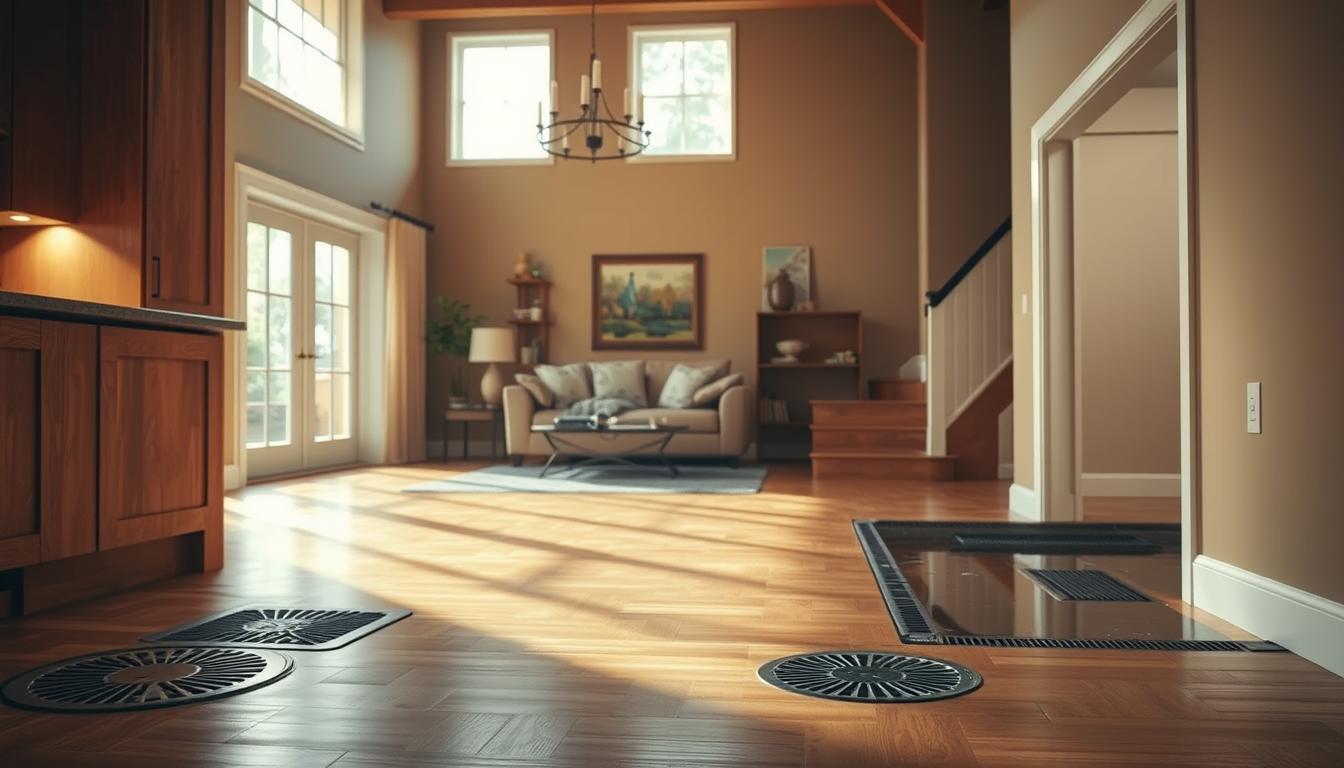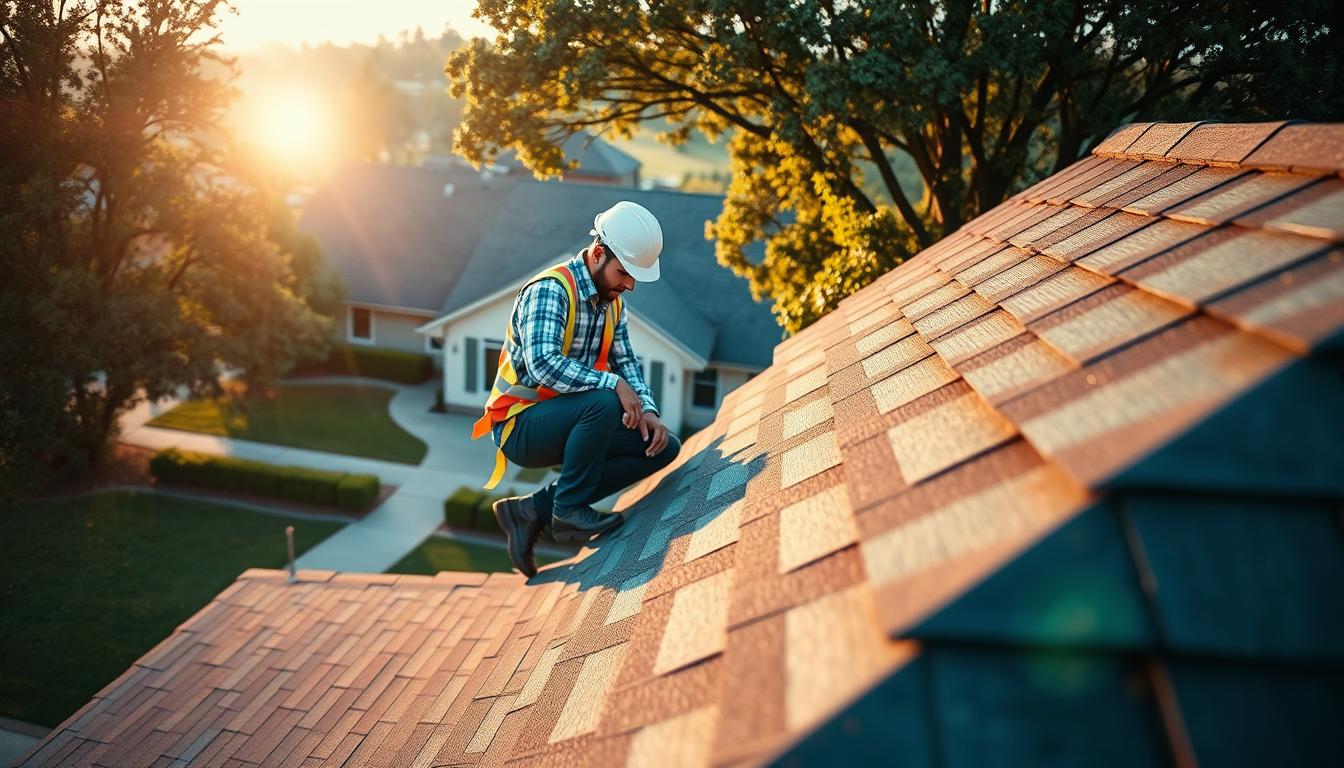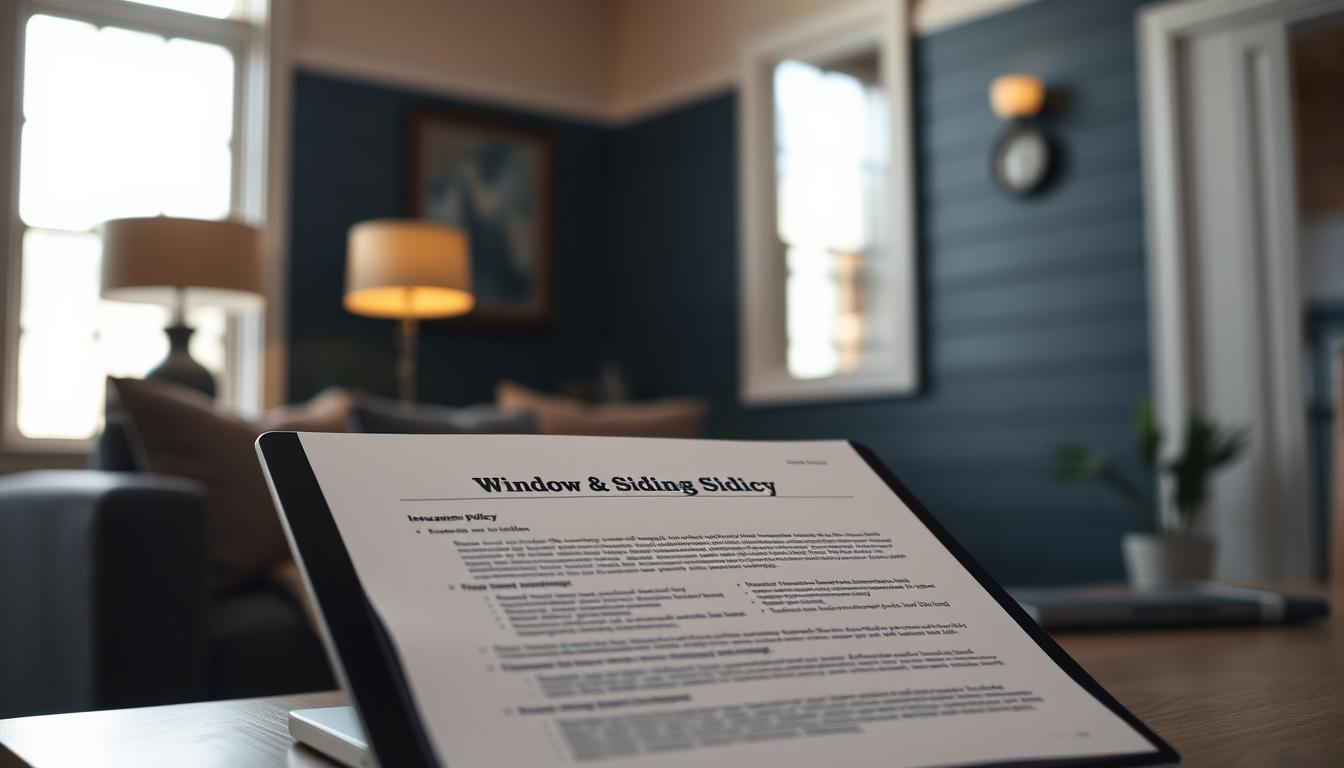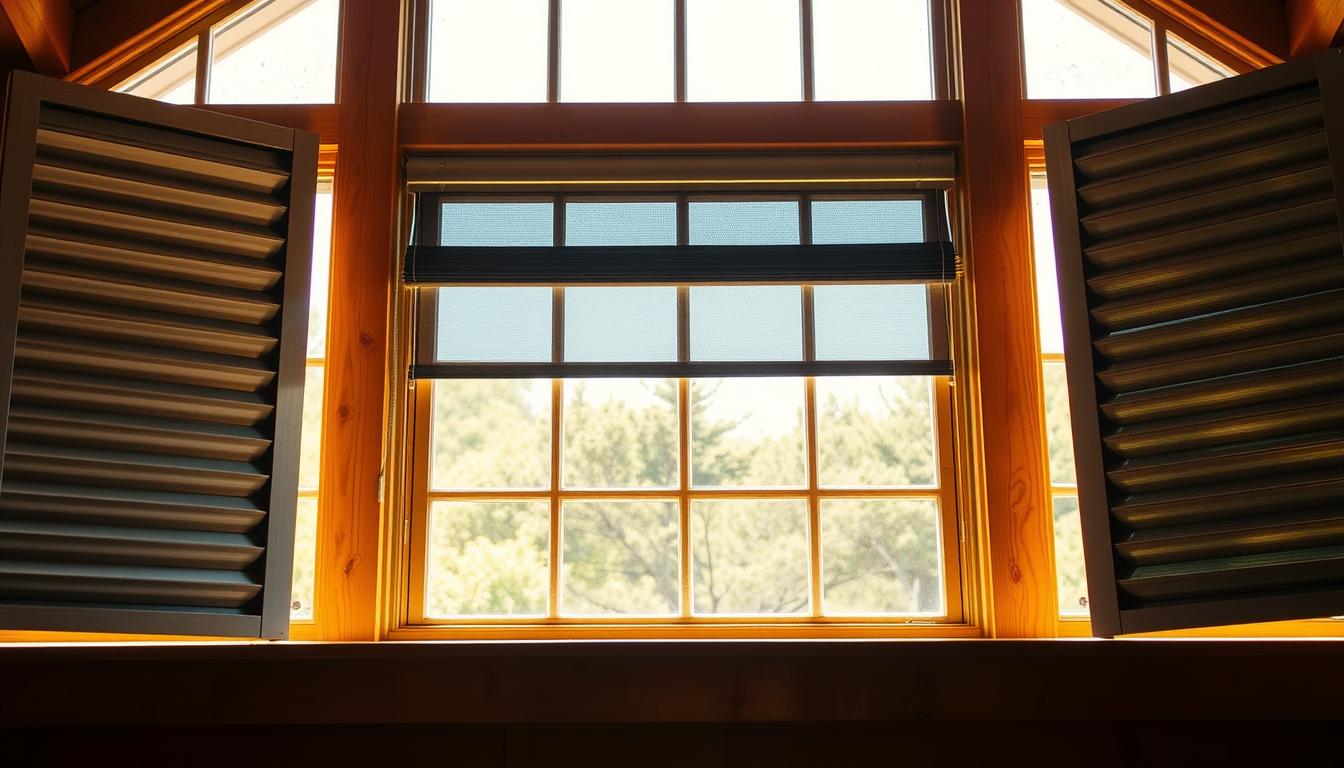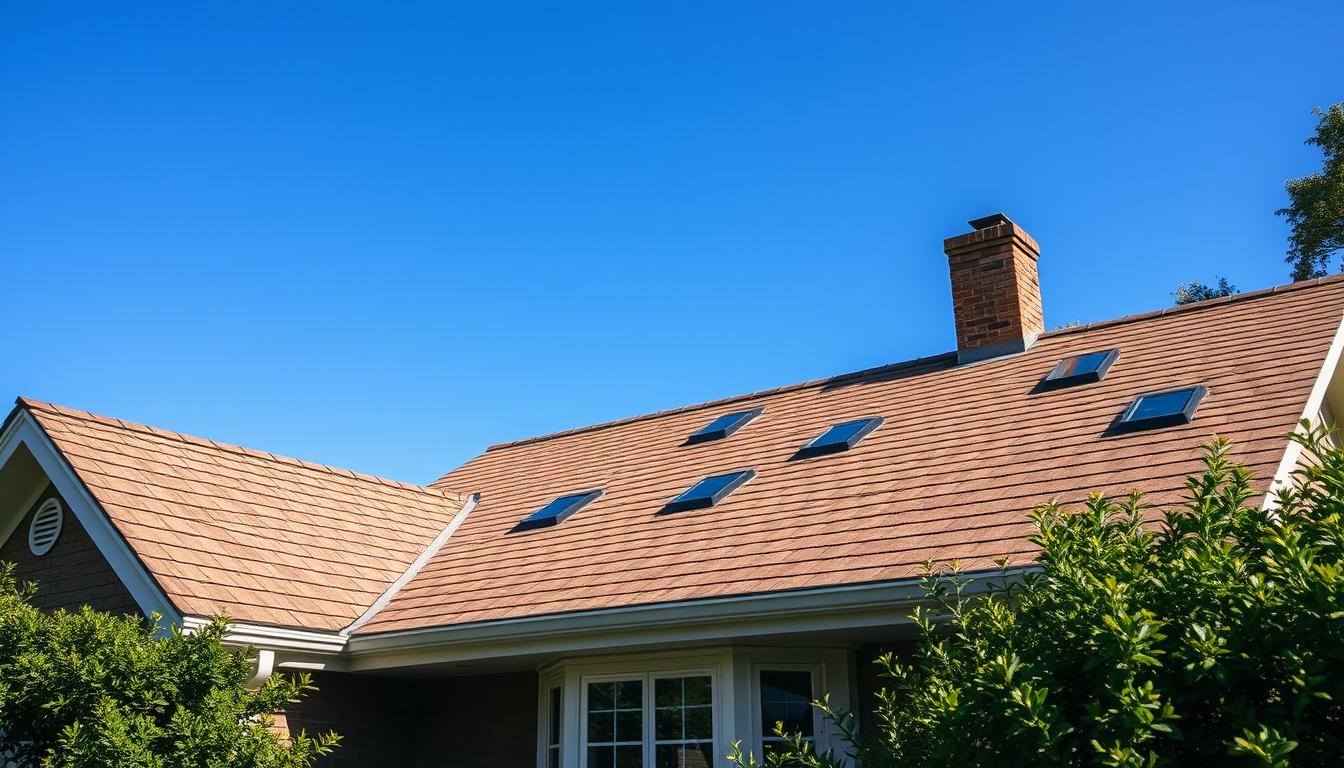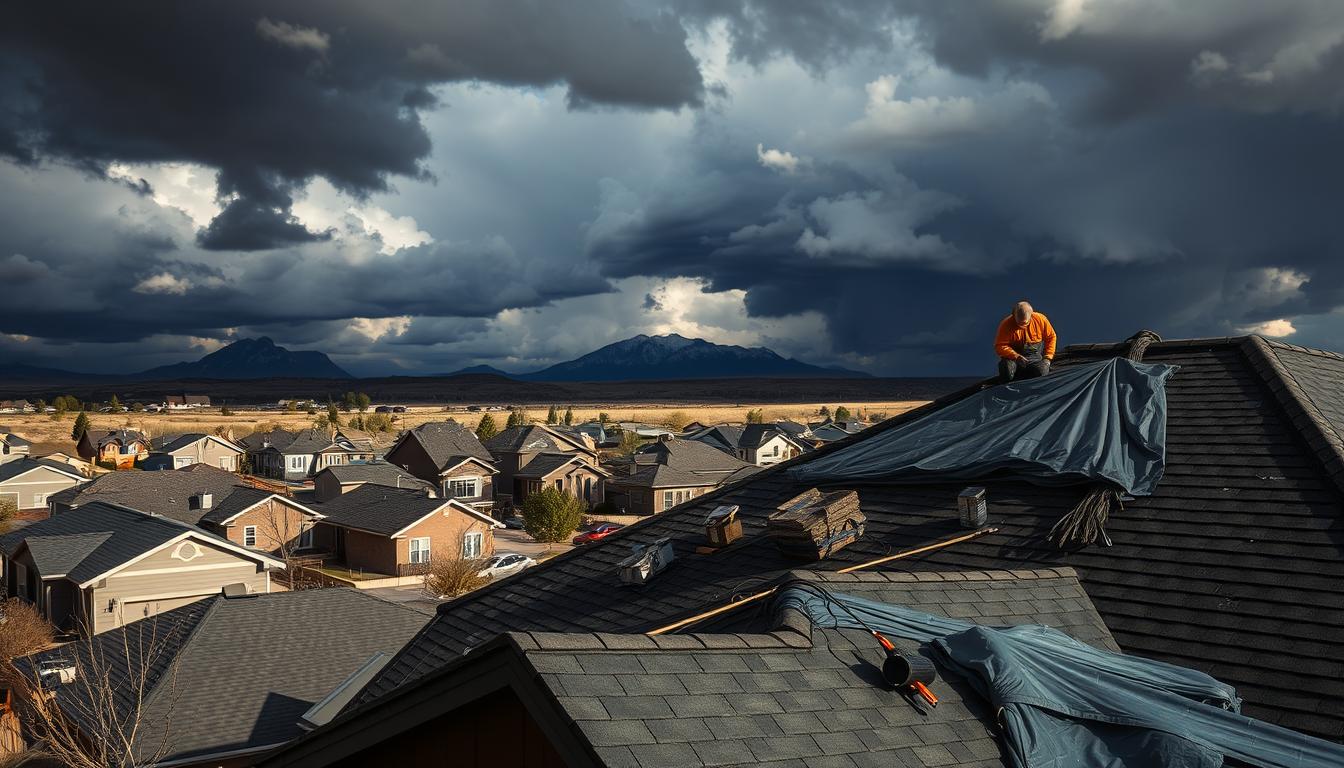Winter weather can cause a lot of trouble for homes. Water damage from storms can happen without warning, leading to expensive and stressful problems for homeowners in Colorado Springs and other places.
The Rich Co Inc knows how important it is to protect your home from water damage. Snowstorms and freezing rain can quickly turn into big risks for your property. Even small issues can become big problems.
Fixing storm damage needs quick action and smart planning. Homeowners need to watch out for dangers like frozen pipes, ice dams, and water getting into your home. These can all harm your home’s structure.
Key Takeaways
- Winter storms pose significant water damage risks to residential properties
- Preventive maintenance can minimize potential water damage
- Quick identification of water damage indicators is crucial
- Professional storm damage repair services are essential for comprehensive protection
- Homeowners should have emergency preparedness plans for severe weather
Understanding Storm-Related Water Damage Risks
Storms can be very dangerous for homes, especially when it comes to water damage. The Federal Emergency Management Agency (FEMA) says flooding happens when it affects two or more acres of land. This makes it important to act fast to prevent water damage.
Water damage can come from many places during bad weather. It’s key for homeowners to know where water might get in to keep their homes safe.
Common Sources of Water Infiltration
- Roof leaks during heavy rainfall
- Basement seepage from ground water
- Overflowing storm drainage systems
- Cracked foundation walls
- Window and door seal failures
Signs of Immediate Water Damage
Spotting water damage early can save a lot of trouble. Look out for:
- Discoloration on walls or ceilings
- Musty odors
- Warped flooring
- Visible mold growth
- Peeling paint or wallpaper
Long-term Effects of Untreated Water Damage
Ignoring water damage can cause big problems. Flood restoration experts warn that prolonged moisture exposure can compromise building integrity. This can lead to:
- Structural wood rot
- Electrical system deterioration
- Persistent mold growth
- Compromised foundation stability
Acting quickly to fix water damage is crucial. It helps keep your property safe and its value from dropping.
Water Damage After Storm: Immediate Response Steps
When a storm hits, water damage can happen fast. It’s important to act quickly. The first 24-48 hours are key to stop long-term damage and health risks from mold.
Here are the key steps for effective storm cleanup and water extraction services:
- Ensure Personal Safety First
- Check for electrical hazards
- Wear protective gear
- Avoid walking through standing water
- Water Damage Assessment
- Identify water sources
- Determine water category (sanitary, contaminated, or highly toxic)
- Document damage for insurance purposes
- Water Removal Techniques
- Use wet/dry vacuums for shallow water
- Deploy sump pumps for deeper accumulations
- Remove wet materials quickly
Professional water extraction services can greatly reduce restoration time and damage. Certified technicians usually finish restoration in 3-5 days. This is much faster than DIY efforts that can take weeks.
Running industrial fans for 72 hours helps dry areas and stops mold. Remember, ignoring water damage can lower your property’s value by up to 25%.
Essential Preventive Measures for Your Property
Preparing for storms is key to keeping your home safe from water damage. Regular upkeep can lower the chance of expensive fixes and structural problems. With careful planning and regular checks, you can keep your home safe from water damage.
Keeping your property safe needs a full plan. Water damage causes about 20% of all insurance claims, with costs between $2,000 and $5,000.
Gutter and Drainage System Management
Good drainage is your first defense against water damage. Here are some important steps:
- Clean gutters at least twice a year
- Make sure downspouts send water at least 5 feet from your foundation
- Use gutter guards to stop leaves and debris
- Check that your home’s ground slopes away from it
Roof Inspection and Protection
Keeping your roof in good shape stops water from getting inside. Experts suggest:
- Get a professional roof check every year
- Fix or replace any damaged shingles right away
- Look for leaks around chimneys and vents
- Trim any tree branches that hang over your roof
Foundation Protection Strategies
Your home’s foundation needs extra care during storm season. Proactive steps can cut foundation water damage risk by up to 30%. Important steps include:
- Seal foundation cracks quickly
- Use a sump pump to stop basement floods
- Apply waterproof sealants to basement walls
- Keep your yard’s drainage right
By taking these steps, homeowners can greatly lower water damage risks. This helps protect your most important asset.
Professional Storm Damage Assessment and Restoration
When severe storms hit, getting professional help for water damage is key. Experts in restoration know how to tackle storm damage in-depth. They offer solutions that fix more than just the surface.
Assessing storm damage is a detailed job. Specialists use high-tech tools to find hidden problems. They check for:
- Structural damage evaluation
- Water intrusion detection
- Mold remediation assessment
- Comprehensive property inspection
Mold growth is a big worry after water damage. Experts say mold can start growing in 24-48 hours. Quick action stops mold damage and health risks.
Restoration pros work with insurance companies to make the claims process easier. They document damage well, helping with accurate claims. This helps homeowners get fair compensation for repairs.
Emergency teams are ready 24/7. They know quick action is crucial. They handle everything from water removal to fixing structures, keeping your property safe and valuable.
Long-Term Solutions for Storm-Prone Areas
Keeping your home safe from water damage after storms needs careful planning. If you live in an area prone to storms, you must take steps to protect your property. The right steps can help avoid costly repairs.
Here are some key ways to protect your home:
- Install pervious surfaces to manage stormwater runoff
- Implement advanced drainage systems around your property
- Raise electrical systems above potential flood levels
- Create landscape designs that redirect water flow
Managing stormwater is key to protecting your home. Local flood maps give you important information about water risks. Knowing your home’s weak spots helps you prevent water damage.
Improving your home’s infrastructure can lower storm risks:
- Install sump pumps with battery backup systems
- Reinforce foundation drainage
- Upgrade roofing and exterior weatherproofing
- Create strategic landscape grading
Getting a professional assessment can lead to tailored solutions. Investing in protection not only keeps your home safe. It can also save you money on maintenance and insurance in the long run.
Conclusion
Water damage can happen without warning, affecting nearly 14,000 Americans every day. The cost to fix it can range from $1,500 to $10,000. This shows how important it is to prevent and act fast.
Preventing water damage is key, not just fixing it after it happens. By checking your home regularly and keeping water away, you can lower the risk by up to 30%. This can save you thousands of dollars in repairs.
If water damage happens, getting help from experts is vital. The Rich Co is ready to help Colorado Springs residents with their water damage needs. Their team can help you avoid long-term damage and keep your home safe. Call them at (719) 287-5385 for help.
Knowing what to do and being prepared is your best defense against water damage. Stay informed, take steps to prevent it, and know when to call for help. This way, you can keep your home safe from water damage.
FAQ
How quickly can water damage start to cause problems in my home?
What are the most common entry points for water during a storm?
How do I know if I have hidden water damage?
Will my homeowner’s insurance cover storm-related water damage?
How long does a typical water damage restoration process take?
What immediate steps should I take when I discover water damage?
How can I prevent water damage during future storms?
What are the health risks associated with water damage?
Can I handle water damage restoration myself?
How much does professional water damage restoration typically cost?
Source Links
- https://pauldavis.com/blog/prevent-winter-water-damage/
- https://www.chubb.com/us-en/individuals-families/resources/digging-out-cleaning-up-staying-safe-after-a-winter-storm.html
- https://www.stormlex.com/the-difference-between-water-damage-caused-by-a-hail-or-wind-and-water-damage-from-a-flood-how-it-can-cost-you-thousands/
- https://www.fema.gov/fact-sheet/wind-damage-versus-floodwater-damage-what-you-need-know-when-filing-claim
- https://www.powerdrykc.com/blog/8-steps-to-take-after-a-water-damage-emergency/
- https://advantaclean.com/ft-lauderdale-fl/about-us/blog/emergency-response-immediate-steps-after-water-damage/
- https://lightningrestorationfla.com/how-to-handle-water-damage-after-a-storm/
- https://www.servicemasterrestore.com/servicemaster-dynamic-cleaning/why-us/blog/2023/july/7-essential-tips-for-new-homeowners-to-prevent-water-damage/
- https://www.puroclean.com/stevensville-md-puroclean-emergency-restoration-specialists/blog/water-damage-3/
- https://www.rtcrestoration.com/storm-damage-restoration/storm/
- https://greater-denver.pauldavis.com/commercial/storm-damage/
- https://michaeliscorp.com/blog/professional-storm-damage-services-expert-repairs-for-homes-and-businesses/
- https://www.travelers.com/resources/home/maintenance/protecting-your-home-from-storm-water-damage
- https://www.fema.gov/press-release/20210709/how-reduce-damage-future-storms
- https://www.disasterkleen.com/water-damage-impact-what-gets-ruined/
- https://www.emscleanup.com/about-ems/blog/water-damage-repair-tips-recover-from-a-flood/

